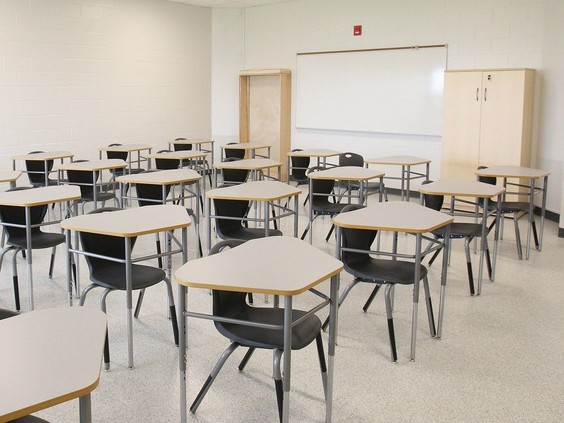Politics
Alberta Teachers Strike Over Class Sizes as Negotiations Resume

Negotiations between the Alberta Teachers’ Association (ATA) and government representatives will resume on March 12, 2024, amid ongoing tensions over class sizes. Educators have expressed that class sizes are a critical issue affecting their working conditions and student learning experiences. The latest government proposal, which included a 12 percent salary increase over four years, COVID-19 vaccinations for teachers, and a commitment to hire 3,000 new teachers, was rejected by ATA members. They argue that it fails to adequately address systemic problems, particularly the growing class sizes in Alberta schools.
Class size remains a contentious issue across Canada. In recent years, legal battles have underscored the importance of this topic. In 2016, the Supreme Court of Canada upheld the right of teachers to negotiate class size and composition, following a lengthy dispute between the British Columbia Teachers’ Federation (BCTF) and the provincial government. The B.C. government had attempted to limit negotiations on these matters, but the court’s ruling affirmed teachers’ rights to advocate for smaller class sizes.
Currently, British Columbia has set provincial class size limits at 22 students for kindergarten, 24 for grades 1–3, and 30 for grades 4–12. In Manitoba, classes for grades K-3 are capped at 23 students, with a requirement that 90 percent of those classes have 20 or fewer students. Ontario and Quebec also implement specific class size regulations, with Ontario limiting average secondary school class sizes to 23 students and Quebec setting targeted class sizes for grades 1-6 at 23 students.
Statistics from the ATA indicate that class sizes in Edmonton have reached alarming levels. Since 2010, enrollment in the city has surged by nearly 50 percent, increasing from approximately 81,500 students to over 121,000 in 2024. A report released in February 2024 revealed that average class sizes are exceeding recommendations made by the Alberta Commission on Learning (ACOL) more than two decades ago. For kindergarten to grade 3, the ACOL recommended a maximum of 17 students per class, but the Edmonton Public Schools (EPS) reported an average of 22.5 students, with some classes having as many as 37 students.
The concerns extend to higher grades, where the EPS reported average class sizes of 26.3 students in grades 7-9, surpassing the ACOL’s recommendation of 25. In grades 10-12, the ACOL advised a limit of 27 students, yet half of the EPS classes exceeded 30 students, with the largest class reaching a staggering 56 students.
Professor Darryl Hunter from the University of Alberta highlighted the contrasting perspectives on class size. Teachers see smaller class sizes as essential for effective education, while funding perspectives may prioritize higher ratios to reduce costs. Hunter noted, “You can have the same ratio, but very different perspectives brought to it, depending on whether you’re worried about the public purse or professional workload.”
In response to the growing student population, Alberta’s operating education budget for 2025-26 is projected to approach $10 billion, reflecting a 4.5 percent increase to manage surging enrollment. Premier Danielle Smith announced plans for an $8.6 billion School Construction Accelerator Program aimed at creating 50,000 new student spaces within three years and an additional 150,000 spaces by 2031. The initiative includes funding for new public schools and charter school spaces, part of a broader “School Choice” policy.
While the plans promise relief in the long term, the need for immediate solutions is evident. Alex Da Costa, an education policy expert at the University of Alberta, criticized the lack of foresight in planning for the city’s rapid growth. “It’s well known that these populations are growing, and with that, obviously, there will be the growth of school-aged children. It’s just a lack of planning,” he stated.
As the ATA and the government prepare for further negotiations, the focus on class sizes will likely remain a central issue. Teachers across Alberta are advocating for changes that will ultimately benefit their students and create a more effective learning environment. The outcome of these discussions may have significant implications for the future of education in the province.
-

 Politics4 weeks ago
Politics4 weeks agoSecwepemc First Nation Seeks Aboriginal Title Over Kamloops Area
-

 World5 months ago
World5 months agoScientists Unearth Ancient Antarctic Ice to Unlock Climate Secrets
-

 Entertainment5 months ago
Entertainment5 months agoTrump and McCormick to Announce $70 Billion Energy Investments
-

 Science5 months ago
Science5 months agoFour Astronauts Return to Earth After International Space Station Mission
-

 Lifestyle5 months ago
Lifestyle5 months agoTransLink Launches Food Truck Program to Boost Revenue in Vancouver
-

 Technology3 months ago
Technology3 months agoApple Notes Enhances Functionality with Markdown Support in macOS 26
-

 Lifestyle3 months ago
Lifestyle3 months agoManitoba’s Burger Champion Shines Again Amid Dining Innovations
-

 Top Stories2 months ago
Top Stories2 months agoUrgent Update: Fatal Crash on Highway 99 Claims Life of Pitt Meadows Man
-

 Politics4 months ago
Politics4 months agoUkrainian Tennis Star Elina Svitolina Faces Death Threats Online
-

 Sports5 months ago
Sports5 months agoSearch Underway for Missing Hunter Amid Hokkaido Bear Emergency
-

 Politics5 months ago
Politics5 months agoCarney Engages First Nations Leaders at Development Law Summit
-

 Technology5 months ago
Technology5 months agoFrosthaven Launches Early Access on July 31, 2025


















